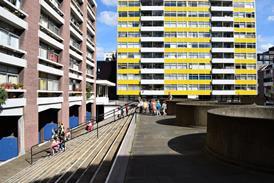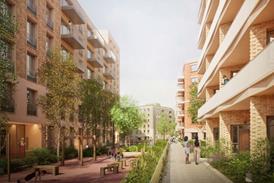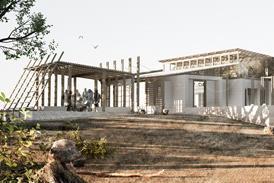Liam Bryant argues that in the rush to develop novel low-carbon materials, the construction industry risks overlooking vital lessons from the past. He calls for a renewed focus on form, labour and design intelligence, suggesting that true sustainability will come not just from innovation, but from a deeper understanding of what we already know

As the climate crisis becomes ever more urgent, the construction industry is finally mobilising to challenge established working practices and reduce our carbon intensity. But are we looking in the right direction for solutions?
Across the sector, there’s a desperate search for novel low-carbon materials to drive decarbonisation, from green steel to low carbon cements and structural stone. But in the rush for the new, are we neglecting the lessons from the past?
History offers remarkable examples of low carbon construction that risk being lost in the rush for new typologies and approaches. We often refer to the familiar Cost, Time and Quality triangle.
I would suggest we should also be focusing on the construction complexity, design investment and carbon impact triangle. A building can be easy to build, easy to design or low carbon, but achieving all three is rare.
A critical lesson from the past is the importance of form. Arches and vaults outperform flat structures in material efficiency and pair well with lower-carbon materials like stone.
These forms are not limited to cathedrals or the elegant shells of Felix Candela and Heinz Isler. They appear in adobe huts, Roman bridges, and the unassuming brick and steel barrel vaults of Victorian infrastructure.
Even mid-century waffle slabs and hollow-pot floors offer insights into the value that simple structural changes can achieve.
What all these designs had in common is a prioritisation of labour over material usage. As Barnabas Calder notes in Architecture: From Prehistory to Climate Emergency, construction outputs are inextricable from their energy contexts.
Historically, we have been limited by the availability, quality or cost of material, and have overcome these with ingenuity and human labour. In the last century, we have been seduced by the over-abundance of material, and the increasing cost of human capital to solve problems with brute force.
How many bold visions have ended as flat reinforced concrete slabs in the name of “simplifying” site works, or easier services coordination?
Simplicity in construction is not inherently bad. There is no virtue in unnecessary complexity. However, in our focus on streamlining processes, we lose the ability to manage beneficial complexity.
In this new reality, we must revisit the past, not out of nostalgia, but necessity
How many contractors are comfortable building waffle slabs or arches, or have the budgets to allow for it? And equally critical, how many designers are comfortable navigating their structural and architectural implications?
This applies equally to the engineering design methods we use. As we have become ever more reliant on our 3D models and FEA, we risk forgetting the traditional techniques that produced the highly efficient structures we see around us.
Often, we look to refurbish a building and find that modern engineering cannot justify the existing structure, not because it is flawed, but because we have lost the experience to understand it.
The buildings constructed in the 1950s and 1960s were built in the context of recovery, with the privation of war very much in memory. Every designer was aware that every scrap of material used was precious, and waste meant that another project went without. Engineers stretched every technique, including moment redistribution, composite action and plastic analysis, to reduce material use to the minimum.
As materials became more available and cheaper, skilled labour and knowledge conversely became more expensive. Why pay a large design fee to save a small percentage of the material costs, especially where this increases risk, structural zones or construction complexity?
Today, we face an ironic dilemma. Materials are abundant but increasingly unusable due to their carbon footprint. In this new reality, we must revisit the past, not out of nostalgia, but necessity. The ingenuity once driven by material scarcity must now be motivated by climate urgency.
The tools and knowledge of the past are not obsolete, they are essential. Relying solely on new materials will not save the climate. Designers must lead the change by designing better, not just building differently.
>> Also read: Donald Insall Associates: A thoroughly modern conservation practice
>> Also read: ‘Never satisfied’ … SANAA’s architecture of process and persistence
Postscript
Liam Bryant is an associate director at Webb Yates
















1 Readers' comment